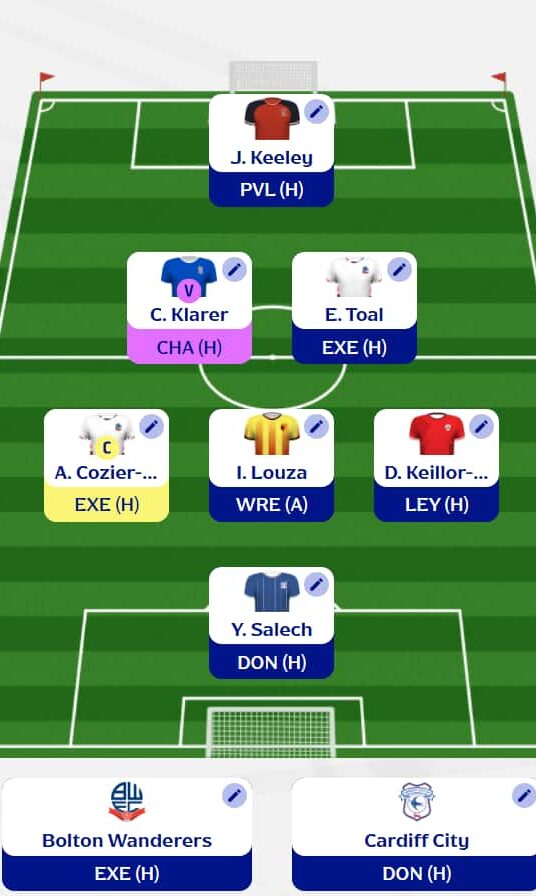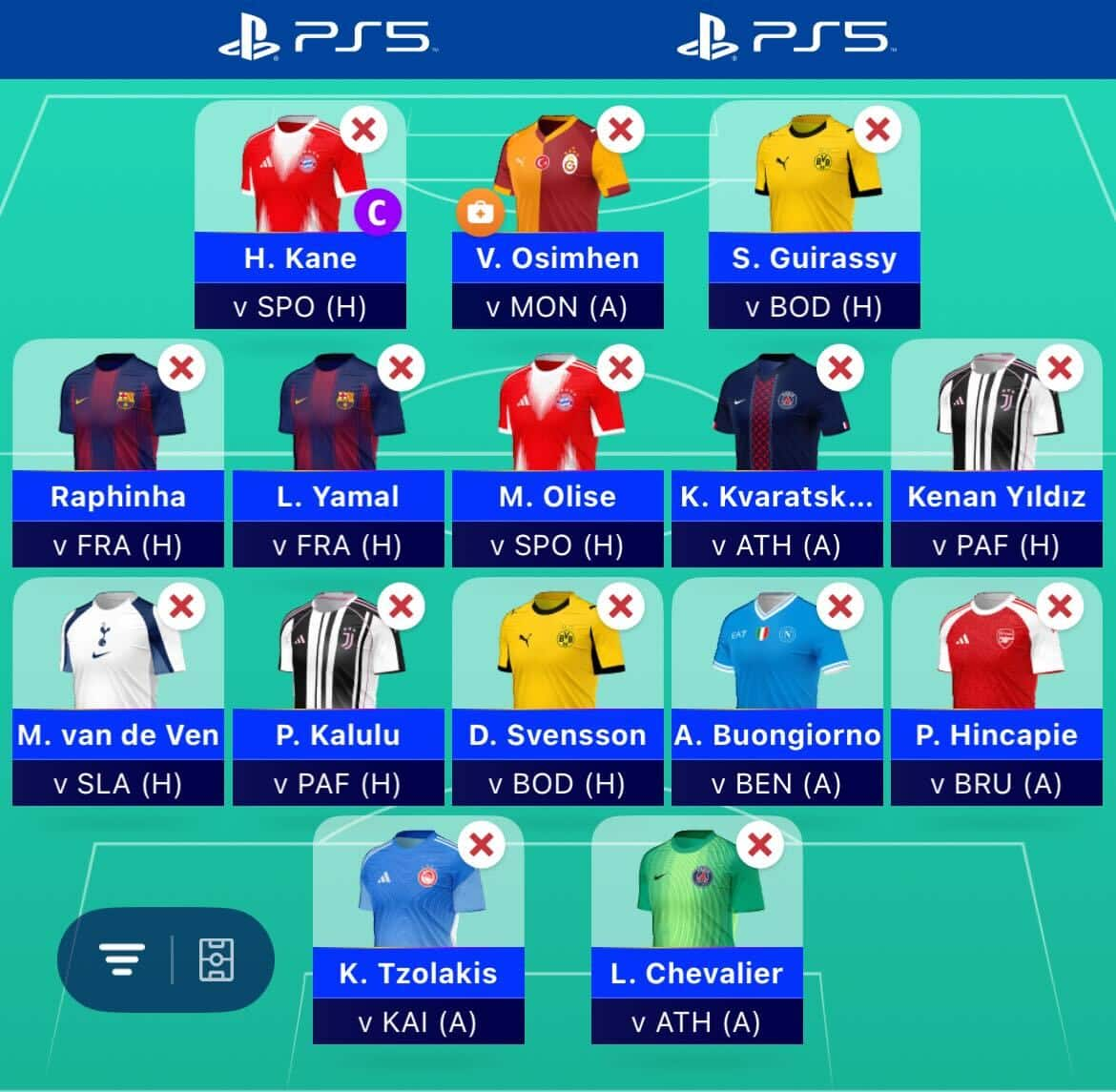Anticipating early Everton returns? Planning to steer well clear of anyone facing the top 6? Or just going gung ho with a form over fixtures mantra?
We all make assumptions about fixture difficulty one way or another in our team selections, but how much difference does it actually make to returns – is it massive or marginal? And does it vary depending on whether you’re a high scoring title contender or grinding out minimal goals and assists at the wrong end of the table?
It’s an area which I, and I think most people, often go ‘informed gut feel’ rather than anything more objective, so I decided to look at what the stats said for 2018/19…
Categorising historic fixture difficulties for 2018/19
Good attacking teams and good defensive teams are not always the same thing, plus with c.57% goals scored at home, and c.60% clean sheets, this needs factoring in too. The below tables are therefore based on goals scored/conceded over the season, and what I think is the best someone could have predicted in terms of fixture difficulty (so rather than use actual anomalies like Crystal Palace low scoring at home, which would have been difficulty to predict, I just applied the overall ratios). I’ve sought to tier it in terms of fairly similar intervals hence bulking up in the centre where there’s a lot of fixtures of similar difficulty:
Fixture difficulty in relation to gaining attacking returns
1* difficulty (Over 1.9 goals per game)
2* difficulty (1.55 to 1.9 goals per game)
3* difficulty (1.25 to 1.55 goals per game)
4* difficulty (0.85 to 1.25 goals per game)
5* difficulty (0.8 or less goals per game)
Fixture difficulty in relation to gaining defensive returns
1* difficulty (1 or less goals conceded per game)
2* difficulty (1 to 1.4 goals conceded per game)
3* difficulty (1.4 to 1.8 goals conceded per game)
4* difficulty (1.8 to 2.3 goals conceded per game)
5* difficulty (Over 2.3 goals conceded per game)
[Happy to share specific fixture categorisations, but excluded on word count limits]
Looking at different tiers of teams
In exploring whether fixture difficulty affects teams in different ways, team by team is really too small a sample size, so instead, I tiered the teams from last year into 5 categories for each of attacking and defensive returns, e.g. Man City & Liverpool 5*, other top 6 4* attack etcc.
For each tier, I then calculated the mean attacking returns (goals, which is obviously proportionate to assists too) and defensive returns (clean sheets) for fixtures of each difficulty level, and compared this against the mean returns across all games.
An example to explain: the 4* defences of Chelsea, Spurs and Everton achieved a combined 43 clean sheets in their 114 games (returning a clean sheet in 37.7% of games). In 1* difficulty defensive matches, they achieved 15 clean sheets in 24 games (returning a clean sheet in 62.5% of those games). So in 1* difficulty games, they achieved 166% (0.625/0.377) of their average expected return.
So how did fixture difficulty affect returns?
The below table and graphs summarise the findings:
[to be added]
Fixture difficulty in relation to gaining attacking returns (i.e. opponent defence strength)
1* difficulty 2* difficulty 3*difficulty 4* difficulty 5* difficulty
Average 139% 125% 105% 85% 46%
5* Attacking team 134% 141% 102% 76% 36%
4* Attacking team 154% 118% 100% 85% 44%
3* Attacking team 146% 104% 117% 79% 46%
2* Attacking team 120% 131% 94% 95% 71%
1* Attacking team 134% 148% 107% 88% 30%
Fixture difficulty in relation to gaining defensive returns (i.e. opponent attack strength)
1* difficulty 2* difficulty 3*difficulty 4* difficulty 5* difficulty
Average 173% 108% 87% 45% 9%
5* Defensive team 127% 93% 93% 93% 93%
4* Defensive team 166% 84% 106% 66% 0%
3* Defensive team 170% 114% 79% 47% 0%
2* Defensive team 174% 113% 90% 34% 0%
1* Defensive Team 234% 122% 69% 0% 0%
At the most basic level, as you can see, fixtures matter. And they matter to everyone.
Attacking returns
• Fixture difficulty seems to affect most sides very similarly.
• 4* attacking sides (top 6 minus Man City/Liverpool) go beautifully on trend as you would expect.
• For 5* attacking sides Liverpool and Man City, there is little difference in attacking returns between 1* or 2* fixtures. In fact on average the 2* rated fixtures were slightly more generous for returns. Likewise for weaker 1*/2* attacking sides. It is difficult to conclude categorically, and may be an outlier, but an interesting trend. This is also played out for 3* attacking sides (Bournemouth, Everton et al) who struggled more for returns in 2* difficulty fixtures than the corresponding 3* ones. Again, this could just be an outlier, or it could be due to the way opponents set up when they just slightly worse than the side in question set up.
Defensive returns
• With regards to defensive returns, fixture difficulty affects top teams rather minimally, but very significantly for poorer defensive sides.
• There is one outlier to the trend which is 3* defensive sides getting more clean sheets in 3* fixture difficulty games than 2* difficulty games, but I think that is due to the high level of unpredictability against sides in these categories so you would expect it to even out over a larger sample size.
What conclusions can we draw for planning going forward?
If you’re not into hard numbers (you may be in the wrong article!), the general principles to take away are:
• Over any given period of e.g. 5 fixtures, there is unlikely to be a huge swing in returns. A rubbish team doesn’t suddenly become great, and vice versa – don’t let it cloud your judgement against picking players who are good picks regardless of fixture.
• I think the best way to think about fixtures is a multiplier against what you’d expect a given player in a normal run of fixtures. As a broad rule of thumb, excluding appearance points, think along the lines of:
- Amazing set of fixtures: 120% returns multiplier
- Good set of fixtures: 110% returns multiplier
- Average set of fixtures: 100% returns multiplier
- Poor set of fixtures: 90% returns multiplier
- Awful set of fixtures: 80% returns multiplier
• In looking at individual fixtures, clearly things can vary slightly more than that, but the biggest thing if you’re playing the fixtures is to avoid fixtures against Man City and Liverpool, which will almost certainly result in 0 defensive returns and minimal chance of attacking returns. Fixtures against other teams (e.g. other top 6, with the exception of maybe Chelsea at home defensively) are less extreme, and shouldn’t stop you outright from selecting a player against these teams.
• For midfielders and forwards, because fixture difficulty affects attacking returns more or less the same across teams, swapping around the highest overall scoring players based on fixtures, particularly if it concerns captaincy, should in theory maximise transfer policy points returns (e.g. the old Kanexit rather than tinkering with 5.5m forwards based on fixtures). Man City or Liverpool defenders in comparison are more set and forget. Clearly more factors are at play than just this in terms of transfers, but worth considering as part of the mix.
• For defenders other than Liverpool and Man City, watch out particularly for the really easy fixture at home to teams which struggle to score, likelihood of clean sheets rocket in these fixtures (albeit sometimes from a low base).
• The figures haven’t convinced me to change my scepticism of rotation, but if you do go for it, I’d suggest the best way to utilise rotation would be 3 decent players (10th, 11th and 12th men) with 2 starters each week avoiding Man City/Liverpool fixtures. In theory, 3 way rotation defenders focussed on maximising the very easiest fixtures could work well, since clean sheets are significantly more likely over other fixtures, but these games are few and far between (most teams have 2 in their first 10 games) so it’s difficult to sustain for any length of time.
• The fact Man City and Liverpool scored just as (actually more) highly against 2* difficulty defences as the worst defence last season means there’s a fair range of fixtures where you’d anticipate high captaincy returns (e.g. 9 points per game for Salah and Sterling) not just the really obvious ones like Norwich at home.
Suggested figures for projecting return variance by fixture
Based on last season’s figures and some smoothing out some of the outliers, some suggested projections of variance by fixture.
Fixture difficulty in relation to gaining attacking returns (i.e. opponent defence strength)
1* difficulty 2* difficulty 3*difficulty 4* difficulty 5* difficulty
5* Attacking team 135% 135% 102% 76% 36%
4* Attacking team 154% 118% 100% 85% 44%
3* Attacking team 146% 114% 114% 79% 46%
2* Attacking team 125% 125% 103% 95% 50%
1* Attacking team 140% 140% 107% 88% 30%
Fixture difficulty in relation to gaining defensive returns (i.e. opponent attack strength)
1* difficulty 2* difficulty 3*difficulty 4* difficulty 5* difficulty
5* Defensive team 127% 99% 93% 93% 93%
4* Defensive team 166% 102% 102% 66% 2%
3* Defensive team 170% 114% 84% 47% 2%
2*/1* Defensive team 174% 117% 95% 34% 2%
They could no doubt be improved, and further analysis of earlier seasons could definitely help in correcting or reinforcing the perceived outliers, but the above seems like as good a starting point as any I’ve seen.
What would that mean for returns in early fixtures?
Attacking returns vs a normal set of fixtures
Average first 3 GWs / Average first 6 GWs
ARS 82% 98%
AVL 86% 99%
BOU 103% 99%
BHA 114% 97%
BUR 105% 99%
CHE 101% 92%
CRY 91% 96%
EVE 125% 119%
LEI 91% 96%
LIV 124% 102%
MCI 93% 114%
MUN 96% 98%
NEW 100% 100%
NOR 83% 84%
SHU 118% 102%
SOU 85% 98%
TOT 99% 98%
WAT 113% 96%
WHU 91% 108%
WOL 108% 103%
Defensive returns vs a normal set of fixtures
Average first 3 GWs / Average first 6 GWs
ARS 95% 94%
AVL 89% 86%
BOU 108% 109%
BHA 129% 113%
BUR 108% 99%
CHE 90% 101%
CRY 92% 92%
EVE 102% 113%
LEI 92% 87%
LIV 97% 102%
MCI 93% 100%
MUN 114% 109%
NEW 82% 88%
NOR 97% 90%
SHU 110% 105%
SOU 89% 100%
TOT 89% 90%
WAT 129% 100%
WHU 82% 96%
WOL 113% 103%
Not actually that much difference is it? Although still notable enough to take heed of. What a disappointingly moderate conclusion!
TLDR
Fixtures matter, but not so much to fundamentally change good/bad picks. Think of them as a multiplier to expected returns in general. Avoid games against Liverpool/Man City


